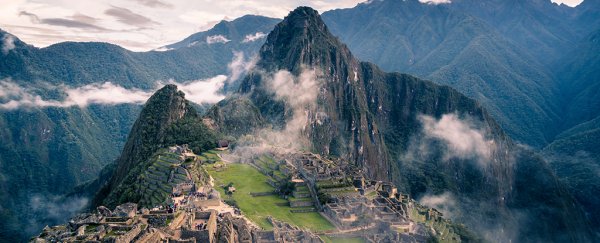As the largest pre-Hispanic civilisation in the Americas, the Incas have fascinated historians for years, just as the Machu Picchu Inca citadel fascinates modern-day tourists. Now, we have more clues about where these people originated, thanks to modern-day genetic analysis.
The origins of the Inca people are shrouded in mystery, which is what makes the new research so intriguing – and it shows that two legends about where this great civilisation sprang up from could in fact be linked.
We all carry some of the genetic coding of our ancestors, and scientists often use DNA genotyping techniques like the ones deployed here to determine which genes we've inherited from our parents.
In this case, that kind of analysis was extended back across several centuries.
"It's like a paternity test, not between father and son but among peoples," one of the researchers, Ricardo Fujita from the University of San Martin de Porres in Peru, told AFP.
Two tales of where the Incas first came from are commonly passed around. The first says they originated near Lake Titicaca, in Puno in south-east Peru; the second has it that the Incas are descended from brothers from the Cusco region, more to the centre of Peru.
To find out, the researchers took DNA samples from the inhabitants of both places, then compared the genetic coding with some 3,000 samples from present-day families known to be descended from the Incas.
These known descendants or 'Panakas' families are the best link we have to the DNA of the ancient Inca nobility, because most historical Inca burial sites and mummified remains were destroyed by the Spanish Conquistadors who arrived in the 16th century.
The researchers found genetic similarities between the Panakas families and people living in Puno and Cusco, showing there's some truth in the traditional legends. Not only that, the two origin stories seem to be linked as well.
"After three years of tracking the genetic fingerprints of the descendants, we confirm that the two legends explaining the origin of the Inca civilisation could be related," Fujita explained to AFP.
"Probably the first migration came from the Puno region and was established in Pacaritambo for a few decades before heading to Cusco and founding Tahuantinsuyo."
Tahuantinsuyo is the sprawling empire that the Incas went on to rule over, stretching from the west of present-day Argentina way up north to the south of present-day Colombia – an impressively big region for a people that started in small pockets.
The scientists have already published some preliminary results but are now keen to go further back in time. Even if the ancient Inca mummies are gone forever, there might still be older burial grounds where DNA can be extracted, they say.
As today's cutting edge techniques get applied to DNA that can be thousands of years old, it's giving us new insight into the past – the way that civilisations spread out and migrated across the course of centuries.
The more data scientists can get, in terms of sample size and time periods covered, the clearer this window into the past becomes. We might have a lot more to learn about how the great Inca empire began.
Early results from the research have been published in Molecular Genetics and Genomics.
